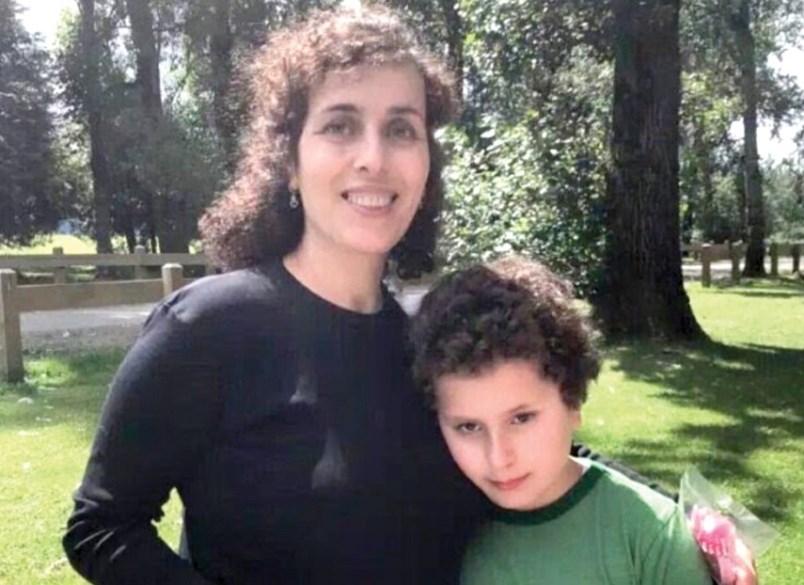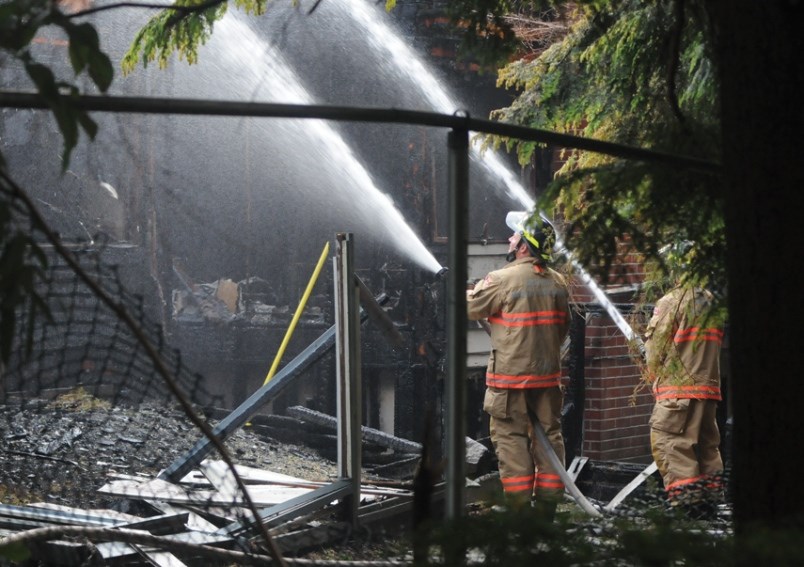Residents of a Lynn Valley apartment complex where a fire took the lives of a North Vancouver mother and her eight-year-old son in June may never know what caused the fire to start.
North Vancouver police and fire investigators say they can’t pin down the cause of the June 11 fire that resulted in the deaths of Narges Casnajad and her youngest son Sepehr Koshkoye Delshad at the Mountain Village Garden Apartments at Whiteley Court.
After two months of on-scene investigation, including sifting through “large volumes of fire debris,” interviews with witnesses and examination by structural and electrical engineers, fire investigators have ruled the cause as undetermined.
That’s likely to be unsettling news for residents who still live in the building, where the fire also sent 15 people to hospital and left 14 families – made up of 40 people – homeless.
“If I still lived there and there was no reason for the fire, I wouldn’t feel safe,” said former Mountain Village resident Jacqueline Diamond, who was a friend of Casnajad when both lived in the complex and had young children.
Diamond, who organized a fundraising campaign to help displaced families in the wake of the fire, said she felt “a little bit angry” when she heard the cause couldn’t be determined. “Everybody’s speculating about it.”
Investigators did rule out some possible causes, said fire Chief Brian Hutchinson of District of North Vancouver Fire and Rescue Services. “We know that it wasn’t one of the building systems,” like an electrical problem, he said. “That was ruled out in the early stages.” Arson is also considered unlikely.

Fire investigators also ruled out the possibility of a barbecue on a balcony starting the fire.
Investigators also know where the fire started – outside, in a breezeway that ran between buildings. Beyond that, however, any number of possible causes, including accidental causes, remain possible, said Hutchinson.
Hutchinson added investigators haven’t been able to determine whether smoke alarms were functioning in the apartment where Casnajad and her son died.
Residents in other units reported their smoke alarms went off, alerting them to the fire, he said. There were smoke alarms in the apartment, said Hutchinson, but whether they were working remains unclear because “there was significant fire damage in the suite where the deaths occurred.”
Because the apartment complex was built before 1979, the building code allows smoke alarms in the complex to be battery-operated, rather than wired into the electrical circuits of the building. Landlords are required to inspect the smoke detectors within apartments when the tenancy changes and replace them at least once every 10 years.
Multi-family apartments built after 1979 must have smoke detectors permanently wired into the building.
According to the provincial Office of the Fire Commissioner, statistics show a “strong link between working smoke alarms and reduced fatalities from residential structure fires.”
Diamond said while families displaced by the fire all have some kind of temporary shelter now, many of them are still on a search for permanent homes.



